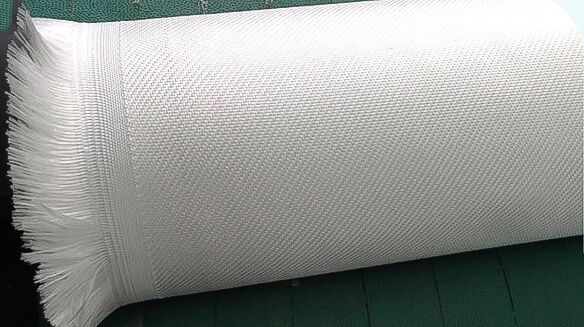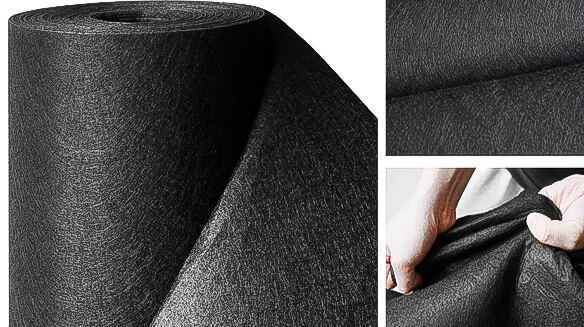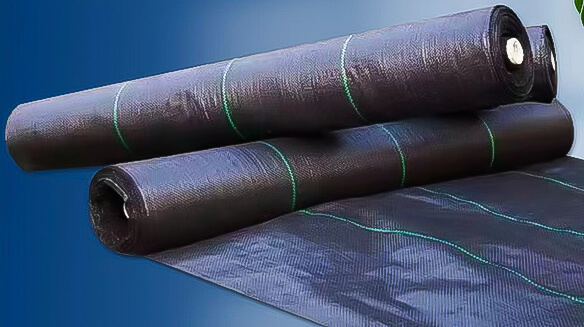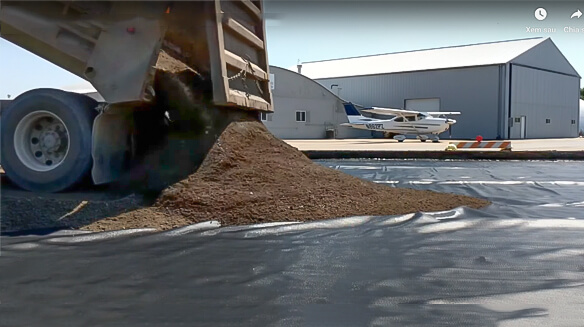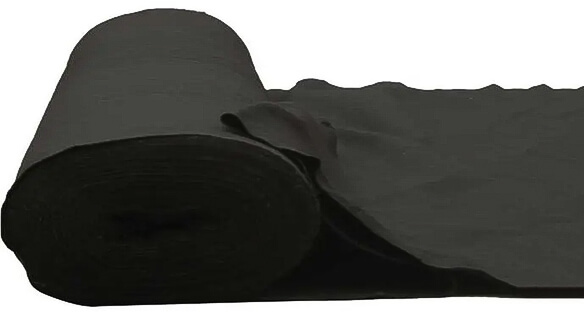Contents
What is Geotextile Fabric Made of: Benefits of Geotextiles
Meta: What is Geotextile Fabric Made of? Geotextile fabric is manufactured from polymer materials such as polyester, polypropylene, polyethylene, or nylon. They can be either woven or non-woven, depending on the specific application. With advancements in technology, they can now also be created from recycled, environmentally friendly sources while still ensuring maximum quality and performance. Let’s explore this unique manufacturing process and how it produces an ideal material for soil stabilization and erosion control.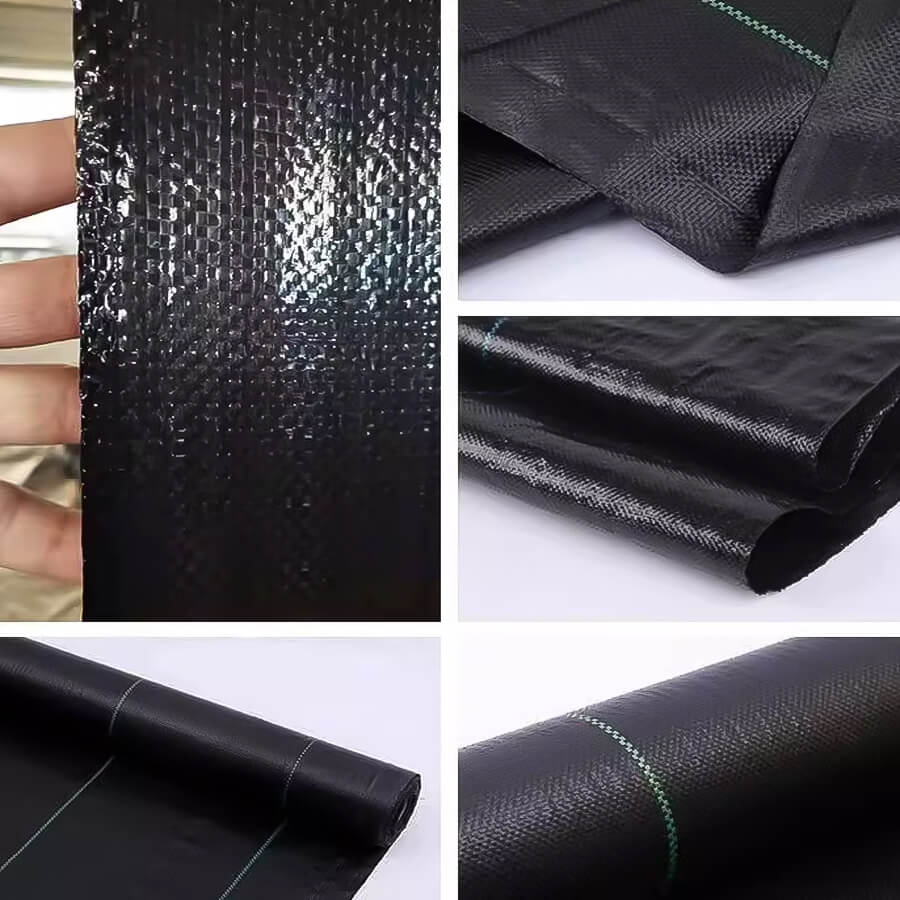
Woven Geotextiles: Their Historical Significance and Role in Soil Conservation
Woven geotextile fabrics, born from slit film polypropylene, serve a crucial role in soil management. These materials, fundamental in earthworks, civil engineering, and agriculture, originally comprised woven natural fibers. The transition to synthetic fibers brought them into the limelight.
Woven and non-woven geotextiles possess strength and flexibility. However, the special weaving process of woven geotextiles enhances their effectiveness in soil separation, filtration, and reinforcement. They create an under-soil barrier, controlling soil movement and erosion, hence prolonging durability and longevity.
Woven geotextiles’ contribution to soil management is invaluable. They protect soil from erosion and strengthen it against harsh weather. Synthetic polymers like polypropylene, resistant to biodegradation, comprise these fabrics. Their durability makes them ideal for long-term projects such as road construction, landfills, and embankments.
As woven geotextiles rose to prominence, advancements in geotextile technologies thrived. Today’s woven geotextiles boast improved properties. Modern weaving techniques have led to increased tensile strength while retaining permeability. With this progress, woven geotextiles have enhanced their efficiency in managing soil stability amid urban development.
Woven geotextiles still significantly influence soil management and are expected to play an even larger role in the future. These unsung heroes protect soil against erosion, shifting, and human activities. Their absence would make our infrastructure far less secure. Hence, their history and function in soil management deserve recognition.
In sum, woven geotextiles are essential to effective soil management. Grasping their history and functionality leads to better soil conservation strategies and greatly benefits earthworks and land management projects. Woven geotextiles truly are soil conservation’s unsung heroes.
Woven Geotextiles: Composition and Types
Woven geotextiles, as their name implies, are woven fabrics. Synthetic materials, including polyester and polypropylene, make up these fabrics. They’re pivotal in the geotextiles category and important for managing soil. Their development has been significant since they first emerged, setting new standards in the textile industry.
Woven geotextiles primarily consist of synthetic polymers like polypropylene. This polymer is the fabric’s foundation, distinguishing woven textiles from non-woven ones. It offers high durability and resistance to water, UV rays, and even microorganisms. This robustness allows woven geotextiles to endure natural elements, making them useful for various applications.
Woven geotextiles come to life when manufacturers intertwine two sets of yarns on a loom. This weaving creates a crisscross pattern, resulting in one of humanity’s most durable fabrics. Designs vary from open mesh to tight weaves, enhancing their versatility for different construction projects.
Both woven and other geotextiles demonstrate remarkable strength, promoting soil stabilization and adequate drainage. They combat soil erosion, support soil suspension, and even aid in environmental preservation. Woven fabrics like geotextiles thus have a key role in both construction and environmental protection.
The variety of woven geotextiles results from differences in their manufacturing process and materials. Slit films and monofilaments are the two main types. Slit films consist of woven flat tapes, while monofilaments involve woven round strands. Each type has unique properties and is selected according to the job requirements.
In summary, woven geotextile fabric is made from durable synthetic materials such as polyester or polypropylene. The function of woven geotextiles? They provide a sturdy solution to numerous soil-related issues. They are the geotextiles that contribute to improving our world. That’s what makes the domain of polymer fabrics so fascinating!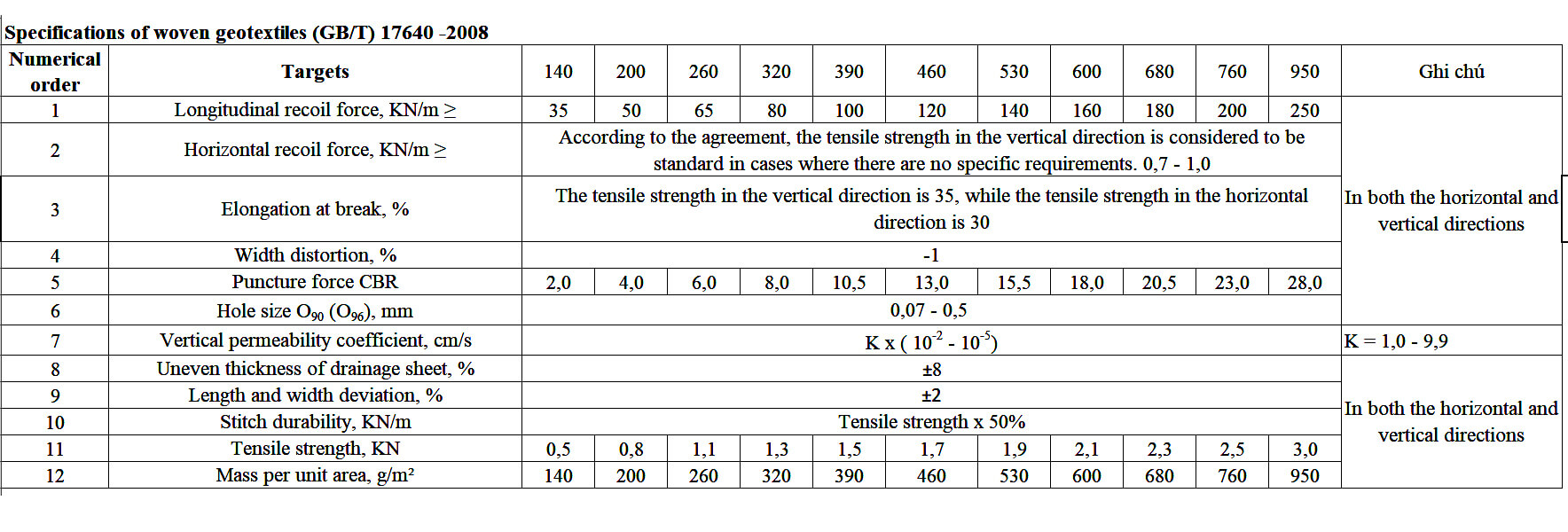
Specifications of woven geotextiles
Understanding Geotextile Fabric: How It’s Made and Its Varieties
Geotextile fabric delves into a realm of intricate materials. They are woven fibers crafted for managing soil. So, what composes geotextile fabric? Polyester and polypropylene materials are their primary constituents. Their selection hinges on durability, permeability, and strength. They often serve as landscape fabric, playing a vital role in numerous landscape tasks.
Geotextiles are crucial for infrastructure and environmental projects. But not all geotextiles are identical. Their specific composition can differ based on their intended purpose. This results in exciting geotextile varieties designed for unique uses in landscape, civil engineering, and environmental fields.
Take a look at the special structures of woven geotextiles. They consist of robust threads interwoven into a solid, homogeneous structure. Woven fabrics, as geotextile subgroups, hold a significant market share. They are highly versatile. Their strength and stability make them ideal for soil separation, filtration, and reinforcement.
It’s interesting that the variety in source materials for woven fabrics allows manufacturers to create geotextiles with diverse properties. Some are made from woven synthetic fibers, while others derive from woven natural fibers. This flexibility yields a vast array of geotextiles, each boasting its own set of features and benefits.
Consider woven polyester geotextiles. They offer exceptional resistance to soil chemicals and bacteria, which makes them highly desirable. Woven polypropylene geotextiles are renowned for their high tensile strength and excellent durability. Geotextiles made from other woven fabrics have unique advantages, fit for various applications and environments.
To sum up, woven geotextile fabrics are indispensable in many fields. Knowing the composition and role of woven geotextiles helps us acknowledge their contribution to sustainable construction and environmental protection.
Woven vs. Nonwoven Geotextiles: Understanding their Structure and Material Composition
Geotextiles, when broken down, come in two main types: woven and nonwoven. Woven geotextiles, as the name indicates, are created by intertwining individual threads in a method similar to traditional textiles. These geotextiles exhibit high strength and structural stability, offering superior load-bearing capabilities. As a result, woven geotextiles are the top choice for tasks demanding substantial stabilization, including road construction and soil restoration.
Conversely, nonwoven geotextiles are crafted by bonding or interlocking webs of fibers, achieved through heat, pressure, or chemicals. Unlike the defined, grid-like structure of woven geotextiles, nonwoven ones feature a more random structure, resulting in increased flexibility. They are known for their superb water permeability and filtration properties, making them ideal for use in drainage systems and erosion control.
Both geotextile types can be made from synthetic materials like polyester or polypropylene. However, due to their durability and elemental resistance, woven geotextiles are often preferred. Meanwhile, nonwoven geotextiles are popular for applications demanding greater fluidity, thanks to their open structure.
Woven and Nonwoven Geotextiles: Their Roles in Civil Engineering and Environmental Projects
Though they serve different functions, both woven and nonwoven geotextiles have vital roles in numerous civil engineering and environmental projects. Woven geotextiles play a major role in soil management by sustaining the structural integrity of roads, embankments, and other heavy-load structures. At the same time, nonwoven geotextiles significantly aid in water management. They effectively separate fine soil particles from liquids, enhancing drainage and preventing soil erosion.
Understanding the specific behavioral properties and functionalities of woven and nonwoven geotextiles can be complex, especially when applied to a diverse array of projects. However, recognizing these differences can help in choosing the right geotextile material for a specific application, ensuring the project’s optimal performance. Therefore, differentiating between woven and nonwoven geotextiles extends beyond understanding their manufacturing processes. It’s also about acknowledging their distinct and crucial roles in environmental management.
Role of Geotextile Fabrics in Garden Soil and Water Management
Though performing different roles, both woven and nonwoven geotextiles hold pivotal roles in various civil engineering and environmental projects. Woven geotextiles play a monumental role in soil management by maintaining the structural integrity of roads, embankments, and other heavy-load structures. Simultaneously, nonwoven geotextiles significantly contribute to water management, effectively separating fine soil particles from liquids, enhancing drainage, and preventing soil erosion.
Understanding the specific behavioral properties and functionalities of woven geotextiles and nonwoven geotextiles can be complex, primarily when applied to a myriad of projects. However, acknowledging such differences can help in selecting the appropriate geotextile material for a particular application, ensuring the optimum performance of the project. Thus, differentiating between woven and nonwoven geotextiles is not just a matter of distinguishing their manufacturing processes— it’s about recognizing their unique and separate contributions to managing our overall environment.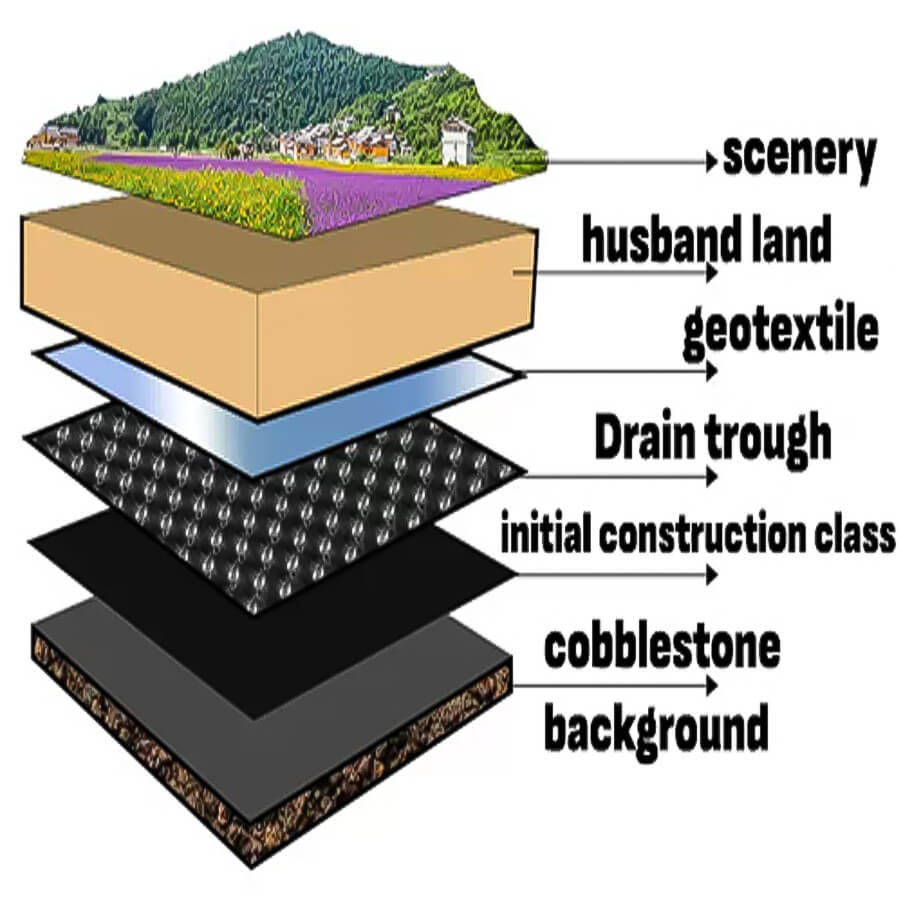
The Impact of Woven Geotextile Fabric on Water Absorption in Soil
Woven geotextile fabrics have a crucial role in managing soil and water. In soil usage, they boost water absorption significantly, promoting healthier soil. Geotextiles are part of a broader soil management strategy, altering how we understand soil-water dynamics.
Geotextiles find use in sectors ranging from farming to building. Woven geotextile’s strength lets it stay intact under significant pressure, making it a top choice for construction sites. Its use extends to garden soil and water management, mainly due to its effect on soil water absorption.
Incorporating woven geotextile fabrics into soil alters the soil-water relationship. First, it encourages greater water permeability. Water can pass through the fabric easily due to its distinct composition, allowing better moisture distribution in the soil. This helps prevent waterlogging and ensures plants get enough water.
Geotextile also affects the soil’s water-holding capacity. It aids soil in retaining more water, curbing runoff, and lessening erosion. During droughts, the fabric gradually releases the stored water back into the soil, maintaining its hydration.
Research indicates that woven geotextiles’ strength can create a sturdy barrier. It can stop specific contaminants from infiltrating groundwater sources. In construction, they are key in managing stormwater runoff. They filter out rough sediment and prevent water pollution.
Learning about woven geotextile is quite interesting. If you want to delve deeper into the subject, a book on the topic can offer further insights into its role in managing soil and water. With the option of a chapter purchase, you can study various topics in detail, from its history to the latest developments. It’s not just about its incredible strength and versatility, but also its potential to shape sustainable practices in the future.
Conclusion
Geotextile fabric is manufactured from polymer materials such as polyester, polypropylene, polyethylene, or nylon, and it can be woven or non-woven depending on the application. Advancements in technology have enabled the production of geotextiles from recycled, eco-friendly sources while maintaining high quality and performance.
Geotextile fabrics play a crucial role in soil stabilization and erosion control. Woven geotextiles, in particular, have a significant historical significance and contribute greatly to soil management by providing strength and flexibility through their unique weaving process. They protect soil from erosion, enhance soil stability, and have various applications in civil engineering and environmental projects.
Understanding the composition and types of geotextiles helps recognize their contribution to sustainable construction and environmental protection, making them vital components in modern infrastructure development and soil conservation strategies.
Frequently Asked Questions
What are the applications of geotextiles?
- Road construction: Prevent the penetration of soil into the rock layer, keeping the road long-lasting.
- Protection of riverbanks and seas: Strengthening banks, preventing erosion caused by water collisions.
- Erosion control: Keeps soil in place, preventing erosion from wind or rainwater.
- Agriculture: Moisturises, suppresses weeds, and improves harvest performance.
- Anti-knock wall structure: Reduce the position change of soil and rock, and enhance the ability to resist tipping.
Why are geotextiles important in erosion control?
Geotextiles are essential in erosion control because they provide a protective barrier between layers of soil, helping to hold soil in place and prevent its displacement. Especially, they can prevent soil movement under the influence of weight and motion, reducing erosion risks. Also, they create a shield between soil and water, preventing water infiltration and protecting against shoreline erosion. Lastly, they can slow down water flow rates, reducing the erosive power of water.

